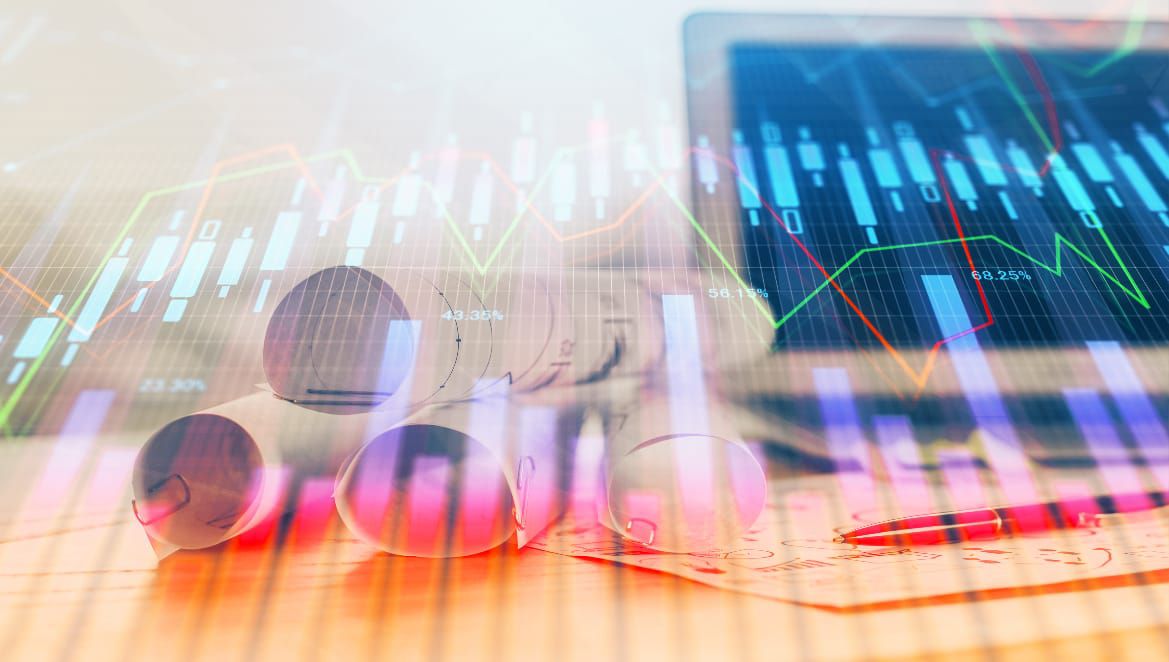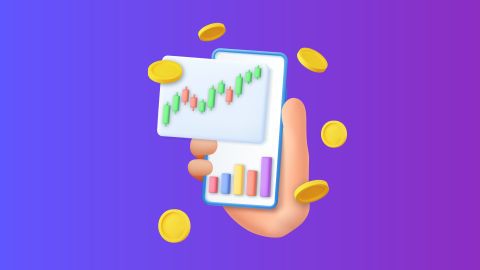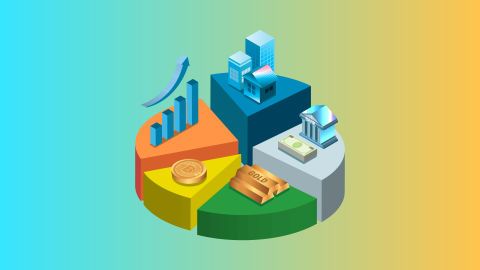The Great Depression of 1929
The Great Depression of 1929 lasted almost a decade until 1939 and led to some fundamental changes in macroeconomic policy. When the First World War ended in 1918, the US economy was making great progress. People were optimistic and bought houses and vehicles, took loans, and made a lot of speculative investments to make profits. However, by 1929, the steam that had gathered momentum began to cool down.
October 1929 saw the markets crash, which in turn led to panic selling that triggered a negative feedback loop. People had borrowed a lot of funds to invest and were highly over-leveraged, so stock prices were over-inflated. The market crashed by 12.82% on the fourth day of the depression and is still remembered as ‘Black Monday’. The consequences of this event were so far-fetched that it took the USA almost a decade to recover from this crash.
Black Monday the 2nd - 1987
The US stock market saw its biggest-ever single-day drop in history in October 1987. Almost 23% of investor wealth was wiped out in a single day, which came to be known as the second ‘Black Monday’. However, this time, technology, over-leveraged borrowings, and speculators also played a role in the downfall.
Before the market crash, leveraged buyouts, corporate takeovers, and financial tools such as margin accounts and junk bonds fueled a surge in stock prices. However, on the day of the crash, the market quickly shifted, with sellers gaining control. This sparked widespread panic, leading to a wave of aggressive selling as investors rushed to exit their positions.
Due to technology enabling faster transactions and order placements, the markets lost more than 20% in one day. This event led regulators to consider installing circuit breakers to protect the markets from such high-intensity and high-risk trading days in the future.
The burst of the dot-com bubble of 1999-2000
After the Black Monday crash of 1987, the USA witnessed the dot-com bubble burst during 1999-2000. However, this one was a more gradual collapse in comparison to the dramatic crashes of earlier. The dot-com bubble grew throughout the 1990s, when internet stocks drew the attention of investors across the board, leading to hyper-inflated stock prices. It was very easy for companies to raise millions in funding and go public easily.
However, by the end of the decade, the reality of the highly inflated stocks started to dawn on investors, and the market saw a huge correction and crashed. Many newly formed internet companies vanished from existence, while several others got delisted from the tech-focused Nasdaq index as it fell from having 5,000 points in the year 2001 to 1,000 in the year 2002.
The Great Recession of 2008
Another crash that the USA witnessed was the Great Recession of 2009, which was caused by financial firms' excessive selling of mortgage-backed securities to investors and banks.
However, the problem started when the prices of these houses started to fall, resulting in low returns for the holders of these securities. As the prices fell, the owners of these homes could not fulfil their debt obligations, which eventually led to the mortgage-backed securities losing their value. Many big financial players had to declare bankruptcy while the investor community held back on funds to protect their liquidity.
Eventually, the US Congress had to bail out the banks by purchasing these securities to infuse some sense of stability into the market. They also dropped interest rates to stimulate the economy and help it survive.
The COVID-19 pandemic
The COVID pandemic saw the world economy shut down to contain the spread of the disease. As a result, businesses, operations, and life as we knew came to a standstill. Given the unpredictability of the event, investors started selling in record numbers to get some liquidity, which, in turn, caused huge fluctuations in the market. The industrial average of the Dow Jones dropped to 26%.
Uncertainty regarding the future of businesses led to a huge drop, which was further amplified by a drop in the levels of consumption of the masses. This led to a drop in business income, causing investors to sell the shares of companies.









 Deals starting @99
Deals starting @99 Festive deals
Festive deals Min. 50% off
Min. 50% off
 Wallet to Bank
Wallet to Bank
 Loan Against Shares
Loan Against Shares Loan Against Mutual Funds
Loan Against Mutual Funds Loan Against Bonds
Loan Against Bonds Loan Against Insurance Policy
Loan Against Insurance Policy ESOP Financing
ESOP Financing Easy EMI Loan
Easy EMI Loan Two-wheeler Loan
Two-wheeler Loan Loan for Lawyer
Loan for Lawyer Industrial Equipment Finance
Industrial Equipment Finance Industrial Equipment Balance Transfer
Industrial Equipment Balance Transfer Industrial Equipment Refinance
Industrial Equipment Refinance Personal Loan Branch Locator
Personal Loan Branch Locator Used Tractor Loan
Used Tractor Loan Loan Against Tractor
Loan Against Tractor Tractor Loan Balance Transfer
Tractor Loan Balance Transfer
 Smartphones
Smartphones Led TVs
Led TVs Washing Machines
Washing Machines Laptops
Laptops Refrigerators
Refrigerators Air Conditioner
Air Conditioner Air Coolers
Air Coolers
 Get Bajaj Prime
Get Bajaj Prime
 Trading Account
Trading Account Open Demat Account
Open Demat Account Margin Trading Financing
Margin Trading Financing Share Market
Share Market Invest in IPO
Invest in IPO All stocks
All stocks Top gainers
Top gainers Top losers
Top losers 52 week high
52 week high 52 week low
52 week low Loan against shares
Loan against shares
 Business Loan
Business Loan Secured Business Loan
Secured Business Loan Loan against property
Loan against property Loans against property balance transfer
Loans against property balance transfer Loan against shares
Loan against shares Home Loan
Home Loan Loans against mutual funds
Loans against mutual funds Loan against bonds
Loan against bonds Loan against insurance policy
Loan against insurance policy
 Term Life Insurance
Term Life Insurance ULIP Plan
ULIP Plan Savings Plan
Savings Plan Family Insurance
Family Insurance Senior Citizen Health Insurance
Senior Citizen Health Insurance Critical Illness Insurance
Critical Illness Insurance Child Health Insurance
Child Health Insurance Pregnancy and Maternity Health Insurance
Pregnancy and Maternity Health Insurance Individual Health Insurance
Individual Health Insurance Low Income Health Insurance
Low Income Health Insurance Student Health Insurance
Student Health Insurance Group Health Insurance
Group Health Insurance Retirement Plans
Retirement Plans Child Plans
Child Plans Investment Plans
Investment Plans
 Apply for Gold Loan
Apply for Gold Loan Transfer your Gold Loan with Us
Transfer your Gold Loan with Us Gold Loan Branch Locator
Gold Loan Branch Locator
 ULIP Plan
ULIP Plan Savings Plan
Savings Plan Retirement Plans
Retirement Plans Child Plans
Child Plans Free Demat Account
Free Demat Account Invest in Stocks
Invest in Stocks Invest in IPO
Invest in IPO Margin Trading Facility
Margin Trading Facility Fixed Deposit Branch Locator
Fixed Deposit Branch Locator

 Bike
Bike Scooter
Scooter Electric Vehicle
Electric Vehicle Best Sellers
Best Sellers Popular Brands
Popular Brands
 Check your Credit Score
Check your Credit Score
 Engagement Zone
Engagement Zone Game Zone
Game Zone
 New Car Loan
New Car Loan Used Car Loan
Used Car Loan Loan Against Car
Loan Against Car Car Loan Balance Transfer and Top-up
Car Loan Balance Transfer and Top-up

 Personal Loan EMI Calculator
Personal Loan EMI Calculator Personal Loan Eligibility Calculator
Personal Loan Eligibility Calculator Home Loan EMI Calculator
Home Loan EMI Calculator Home Loan Eligibility Calculator
Home Loan Eligibility Calculator Good & Service Tax (GST) Calculator
Good & Service Tax (GST) Calculator Flexi Day Wise Interest Calculator
Flexi Day Wise Interest Calculator Flexi Transaction Calculator
Flexi Transaction Calculator Secured Business Loan Eligibility Calculator
Secured Business Loan Eligibility Calculator Fixed Deposits Interest Calculator
Fixed Deposits Interest Calculator Two wheeler Loan EMI Calculator
Two wheeler Loan EMI Calculator New Car Loan EMI Calculator
New Car Loan EMI Calculator Used Car Loan EMI Calculator
Used Car Loan EMI Calculator All Calculator
All Calculator
 Hot Deals
Hot Deals Clearance Sale
Clearance Sale Kitchen Appliances
Kitchen Appliances Tyres
Tyres Camera & Accessories
Camera & Accessories Mattresses
Mattresses Furniture
Furniture Watches
Watches Music & Audio
Music & Audio Cycles
Cycles Mixer & Grinder
Mixer & Grinder Luggage & Travel
Luggage & Travel Fitness Equipment
Fitness Equipment Fans
Fans
 Personal Loan for Doctors
Personal Loan for Doctors Business loan for Doctors
Business loan for Doctors Medical Equipment Finance
Medical Equipment Finance Secured Business Loan
Secured Business Loan Loan against property
Loan against property Loan against share
Loan against share Gold Loan
Gold Loan Home Loan
Home Loan
 Smartphones
Smartphones LED TVs
LED TVs Washing Machines
Washing Machines Laptops
Laptops Refrigerators
Refrigerators Air Conditioners
Air Conditioners Air Coolers
Air Coolers Water Purifiers
Water Purifiers Tablets
Tablets Kitchen Appliances
Kitchen Appliances Mattresses
Mattresses Furniture
Furniture Music and Audio
Music and Audio Cameras & Accessories
Cameras & Accessories Cycle
Cycle Watches
Watches Tyres
Tyres Luggage & Travel
Luggage & Travel Fitness Equipment
Fitness Equipment Tractor
Tractor
 Home Loan
Home Loan Transfer your existing Home loan
Transfer your existing Home loan Loan against Property
Loan against Property Home Loan for Salaried
Home Loan for Salaried Home loan for self employed
Home loan for self employed Home Loan EMI Calculator
Home Loan EMI Calculator Home Loan eligibility calculator
Home Loan eligibility calculator Home Loan balance transfer
Home Loan balance transfer
 Easy EMI
Easy EMI Offer World
Offer World 1 EMI OFF
1 EMI OFF New Launches
New Launches Zero Down Payment
Zero Down Payment Clearance Sale
Clearance Sale Bajaj Mall Sale
Bajaj Mall Sale
 Articles
Articles
 Overdue Payments
Overdue Payments Other Payments
Other Payments
 Document Center
Document Center Bank details & Documents
Bank details & Documents Tax Invoice Certificate
Tax Invoice Certificate
 Do Not Call Service
Do Not Call Service
 Your Orders
Your Orders Hamara Mall Orders
Hamara Mall Orders

 Fixed Deposit (IFA) Partner
Fixed Deposit (IFA) Partner Loan (DSA) Partner
Loan (DSA) Partner Debt Management Partner
Debt Management Partner EMI Network Partner
EMI Network Partner Become a Merchant
Become a Merchant Partner Sign-in
Partner Sign-in
 Food & Shopping
Food & Shopping Credit Card Hub
Credit Card Hub ULIP Plans
ULIP Plans Top Gainers Stock
Top Gainers Stock Top Losers Stock
Top Losers Stock Savings Plan
Savings Plan Term Insurance
Term Insurance Senior Citizen Health Insurance
Senior Citizen Health Insurance Critical Illness Insurance
Critical Illness Insurance Digi Sarkar
Digi Sarkar Used Tractor Loan
Used Tractor Loan Faster, Easier Gold Loan
Faster, Easier Gold Loan Check Loan Offer
Check Loan Offer Live Videos
Live Videos
















